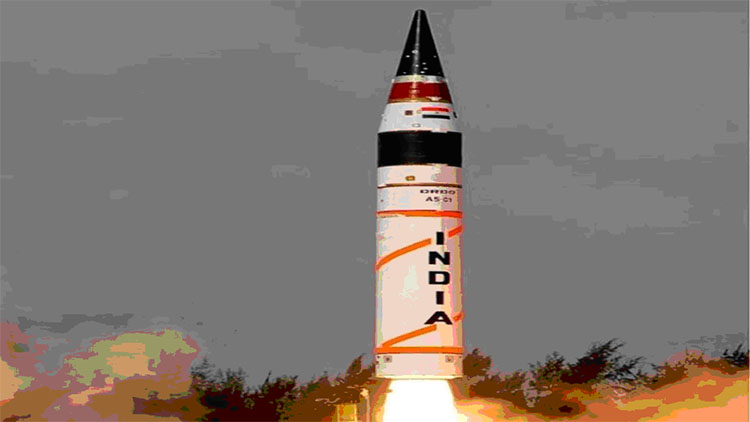Agni VI, ISRO And Radio Silence On India’s 10,000 KM Range ICBM
By Girish Linganna
November 17, 2022
If India demonstrates an ICBM with a range capable of striking vital cities around the globe, the allies may perceive it differently. India has been capable of testing its anti-satellite missile since the launch of the Agni V missile in 2012.
The world has eagerly awaited Agni V’s successor since its first test in 2012. A year hence, the then Chairman of the Defence Research and Development Organisation (DRDO), VK Saraswat, confirmed that the work on a long-range ballistic missile was underway. He also hinted at multiple warheads capability that could hit multiple targets simultaneously. At that time, the designs were finalised, and the project was in the phase of hardware realisation.
Nine years since the remarks, there has been an eerie silence on the Agni VI. Why is there radio silence? Can India develop an intercontinental ballistic missile (ICBM) with a range of 10,000 KM?
Two Sides of the Same Coin:
A nation with a successful space programme is often believed to be able to target and use nuclear weapons anywhere in the world. If they can launch even a medium-sized satellite into a higher earth orbit, they can aptly rework their space launch vehicles to destroy any location on the planet. Indian Space Research Organisation (ISRO) has been the pillar of India’s successful space programme.
New Delhi launched its first satellite in 1980 using the indigenous SLV3 rocket. The rocket, developed by the DRDO, kick-started the development of ballistic missiles under Dr APJ Abdul Kalam. In under a decade, India conducted the first test flight of its surface-to-surface Agni Technology Demonstration missile, utilising the knowledge and technology from the SLV3 rocket.
The first in the series, Agni I, boasted a 700-1200 KM range. After the success of Agni I, ISRO developed the Polar Satellite Launch Vehicle (PSLV) that had four stages using a mix of solid and liquid fuel stages. This development heavily inspired the Agni II missile, especially its second stage. The rocket has two solid fuelled stages. This 2-stage design has been touted for its mobility and adaptability. With a 2000 KM range, India could reach all of Pakistan and most of southeastern China.
India’s Agni series missiles were upgraded concurrently with the country’s advancements in space technology. India also made other Agni missiles, such as the Agni III, which can travel up to 3500 kilometres and the Agni IV, which can travel up to 4000 kilometres.
In 2012, the Agni V ICBM was a game changer with a range of about 5500 kilometres. India successfully demonstrated its counterforce capability thanks to Agni V’s increased payload and multiple independently-targetable reentry vehicle (MIRV) capabilities. High accuracy in both further added lethality to the Agni V.
This is most definitely a message of a higher degree directed at the possible adversary. With the launch of Agni V, India has signalled to the rest of the world that although it does not engage in preemptive nuclear strikes, it has maintained a counterforce capability. Thus, if anyone employs a nuclear weapon against India, India can now launch a counterforce capability against the nuclear strike forces of its adversary. The successful launch of India’s Agni V missile continues to ruffle feathers in China, which has said India has deliberately downplayed its capabilities.
Chinese analysts believe that the missile has the capability of reaching targets up to 8000 kilometres distance. However, Indian officials have said that the missile can cover a distance of over 5000 kilometres.
Courtesy: FE Online

